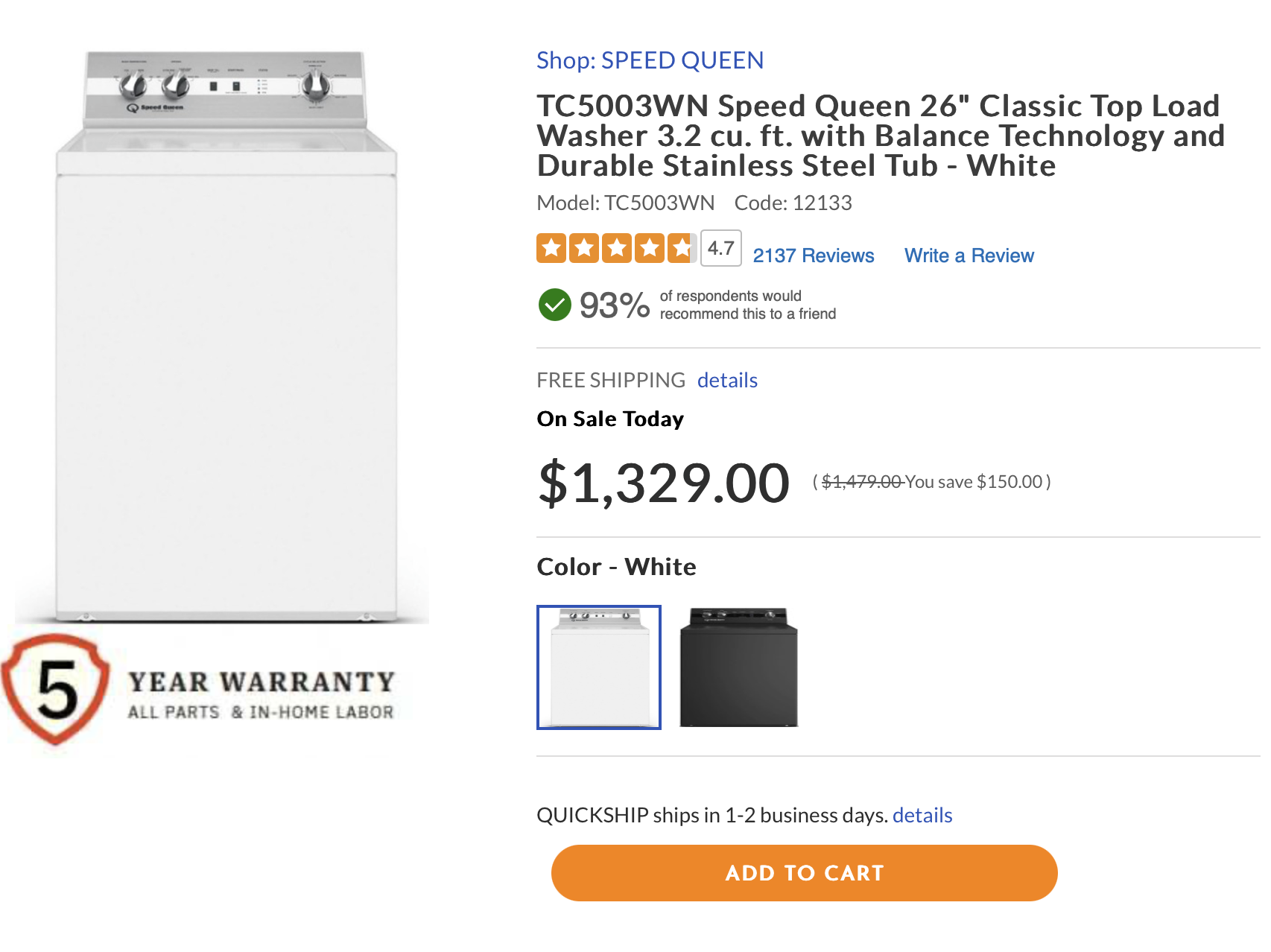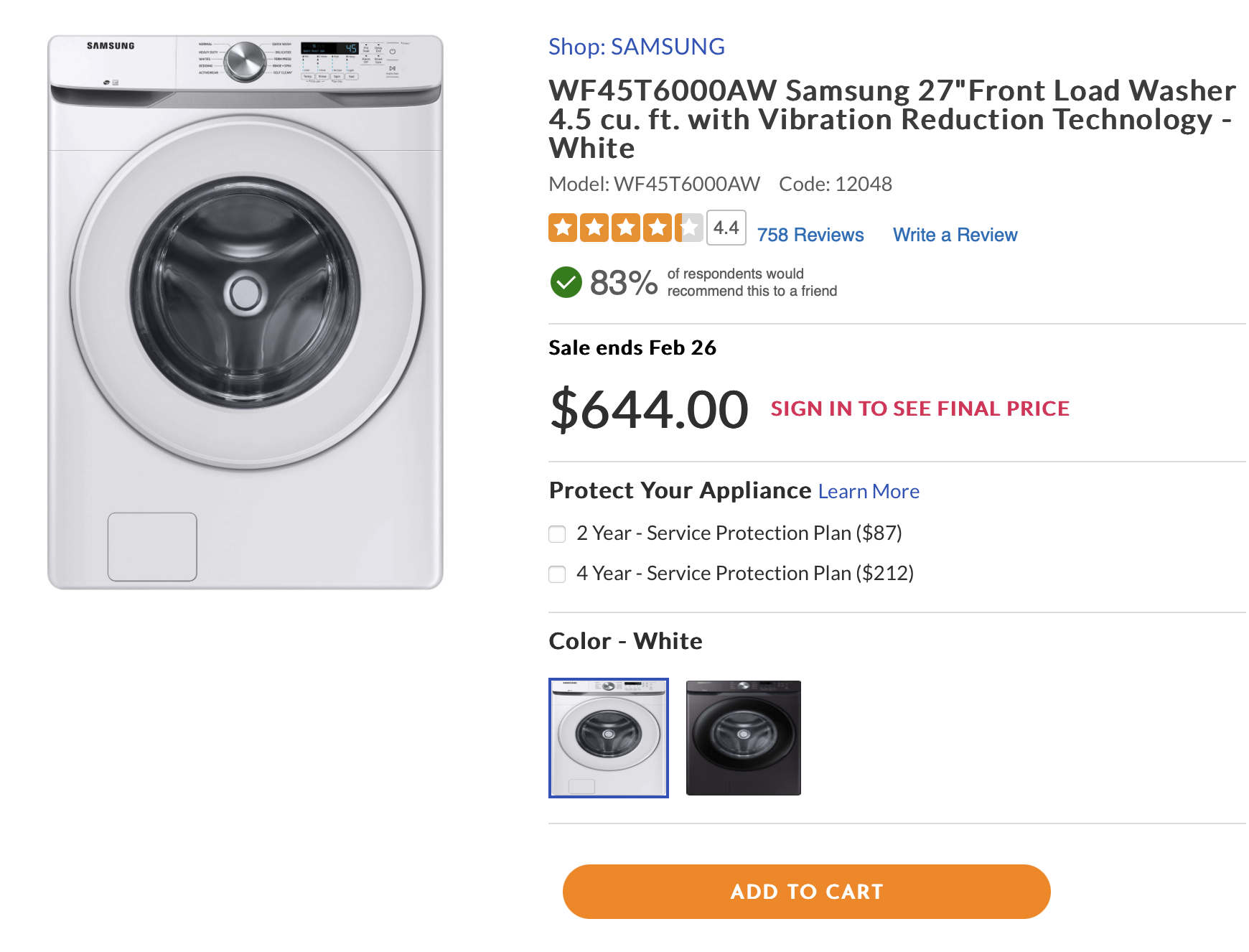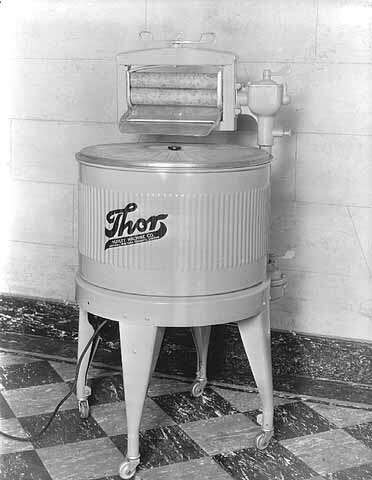I, like most people, have a fairly new, energy-efficient front-loading washer and dryer. They have digital displays; they sing pleasant music to me when I open them up and when my washer is finished; they have dozens of easy-to-see functions - and I absolutely hate them.
Why?
- They take forever.
- They do not wash and dry very well.
- The washer literally stinks and needs to be cleaned constantly.
- They break often, and the repairs are extremely costly. (Almost as much as a new appliance.)
- They take forever.
- They do not wash and dry very well.
- The washer literally stinks and needs to be cleaned constantly.
- They break often, and the repairs are extremely costly. (Almost as much as a new appliance.)
We have access to a little guest apartment next to our house, and in it, there is an old-school washer and dryer. These have been running since I first ran across my parent’s living room (and into the corner of a coffee table.). They have no digital parts at all. They are simple, no-frills machines.
And I would trade my fancy front-loader for them in a heartbeat. Why?
- They just work.
- They are easy to repair.
- They do the basic job of cleaning clothes better and faster.
- They just work.
- They are easy to repair.
- They do the basic job of cleaning clothes better and faster.
It turns out, I’m not alone in this hatred of new-fangled washing machines. Nearly every person I know who I’ve ever talked about washing machines with shares the same opinion: new appliances are terrible.
One time I was talking to a washing machine repairman (as he was on his back in my laundry room, repairing my fancy new washer again) and I asked him what he used - without hesitation, he said “Speed Queen.” He said he’s almost never had to work on one, and when he does, it’s the easiest job ever.
If you have never seen a Speed Queen appliance before - well, it looks like someone found the pattern for your grandmother’s washing machine and decided to just keep making it. No circuit boards. No fancy features. Just a simple, old-school washing machine that is built like a tank.
And people pay twice as much for them. Compare these two product listings:

These are basically the same two washing machines. The Samsung one has all kinds of modern features and looks absolutely stunning (it looks like it could have been created by Johnny Ive). It only costs $644.
The Speed Queen is super simple, with just three manual knobs. It looks like it was built in the early 1980s. But it still costs over twice as much (at $1329), and lots of owners think that is money well spent.
What Does This Have to Do with Software?
I think there are three important lessons here that we can apply to creating software…
1. Reliability is the Ultimate Feature.
When it comes to washing machines, I would gladly pay twice as much for something that has half the features if it just works. Reliability trumps fancy features.
This past year, I got to travel to Africa where I rode in a Toyota Hilux for the first time. Those little trucks (similar to a Toyota Tacoma in the states) don’t have a lot of frills - but boy, are they reliable. Everything is well-built and well-tested. As a result - they are everywhere.
As software developers, I think we need to own the reliability of our products. It’s better to have fewer features and ensure that the core features are reliable - than to build a bunch of stuff that will have to be replaced next year or the year after.
Consider GitHub. GitHub is, at its core, an old-school Rails app. It still relies on lots of page refreshes and still generates almost everything you see server-side. They could make GitHub a lot more “modern feeling” by replacing the whole thing with React - but I don’t think it would improve the experience AT ALL. Developers use GitHub because it is reliable.
It’s ok to prioritize reliability over flashiness. It will likely even make what you build more valuable in the long-term.
2. Keep It Simple.
If you look at a Speed Queen washer - it is extremely simple. It does the basic function of a washing machine with well-built, time-tested simple parts.
As developers, we have to be ok with making things that are simple and do the job. Our end users don’t care that we are using the latest and greatest JS framework. They are likely annoyed that we are shoehorning AI into everything. It’s ok to just make simple software that does one thing and does it well.
Building things simply often makes them better for end users. Consider the Google homepage. It’s just a text box and a button. The experience of that page would not be at all improved if they added a bunch of news content, or a flashing video ad. If Google did this, I’d quickly start using something else for my search engine.
Building things simply also has two distinct advantages for developers:
First, when we build simple, we make it easier to understand what is going on when we have to come back to it later or when others have to work on our code.
Second, when we build simple, it is easier to repair when things don’t work. Ask any mechanic if he’d rather work on an old Chevy truck or on a new vehicle packed with features (and computers) that are impossible for any single person to understand.
This leads me to my third takeaway for software development.
3. Stick with What Works.
People will spend $1300 on a Speed Queen washer with fewer features because it just works. It’s built on technology that has worked for washing machines for 100 years.
The story of web development over the last 15 years has been the story of adding complexity.
- JS build pipelines.
- CSS framework abstractions.
- Abandoning framework-based approaches for DIY lego kits like Node.
- JS build pipelines.
- CSS framework abstractions.
- Abandoning framework-based approaches for DIY lego kits like Node.
For a while, it seemed like there was a new JS framework that came out every single week. We went from server-rendered frameworks like Rails and Django to doing everything in the front end (Rails and Vue) to now using front-end tooling to make server-rendered pages (Next, Nuxt). All along the way - it’s gotten more and more complicated and harder to understand.
But we don’t have to play. We can stick to the tools that are simple, well-tested, and have proven to work since the early 2000s.
I challenge you to make your next app using a well-tested backend framework (Rails, Django, Laravel, .Net MVC) - keep it as simple as possible and progressively enhance it with features as needed (using something like Hotwire or HTMX). I have a feeling you’ll end up with something much simpler, that’s much more fun to work on, and that is far more reliable - and that your end users will appreciate it.
So, in a world full of Samsungs, be a Speed Queen.

